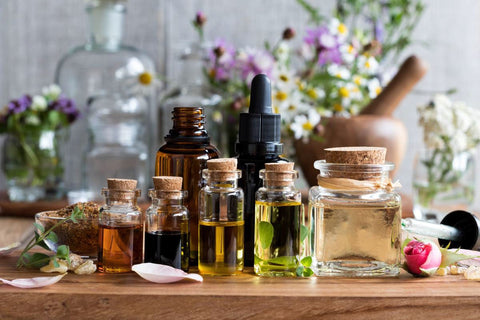Incense sticks have been used in various forms for thousands of years. Because they contain high concentrations of essential oils, they are often utilized in aromatherapy. In addition, incense sticks are frequently used for yoga and meditation to produce a relaxing ambiance. When we are emotionally agitated or restless, incense can signal the brain, resulting in relaxation and soothing feelings.

When incense sticks are inhaled, the chemicals are absorbed by the olfactory system, which sends signals to the limbic system in the brain, influencing mood and memory processing. When ignited, incense sticks manufactured from essential oils emit an attractive, aromatic smoke made of fragrant plant-based materials such as plants, herbs, and tree bark. Let's have a look at how to make homemade incense sticks.
How To Make Incense Sticks at Home
Using the essential oil of your choice, you could get creative and create new and intriguing incense sticks. When crafting your incense sticks, don't be afraid to experiment.

Homemade Incense Sticks Ingredients List
Making homemade incense sticks is quite easy and simple to make as it requires only a few basic ingredients, which are quite easily available on VedaOils website. Take a look at the ingredients list below:
- Incense Stick
- Essential Oils
- Tray
- Aluminium Foil
DIY Incense Sticks Recipe - Step by Step
If you are a beginner, we recommend starting with one incense stick at a time. And after everything goes well and you've found the right combination, you can make a number of them all at once. So let’s go through making incense sticks using essential oil.
Step 1: Make a Test Stick
Test a small batch of your blend on a single stick before you fragrance, a big quantity of incense sticks with essential oils. Apply up to 20 drops of essential oil directly to one incense stick to generate a single test stick. If you're using a combination of oils, combine them before placing them on the incense stick to ensure uniform distribution.
Step 2: Get Your Essential Oils Ready

After deciding on the essential oil, you are going to use. As the volume grows, you can use up to 4ml (around 100 drops) of essential oil per five incense sticks, with a bit less each stick. Make your essential oil blend according to the amount of the batch you're making.
Step 3: Saturate Your Unscented Incense Stick with Essential Oil
Just place your incense stick blanks on an aluminium foil-lined tray. Distribute the essential oil combination as evenly over your blanks using a dropper or sprayer. Place the soaked incense stick on a tray to dry for 24 hours.
Step 4: Cover and Store the Incense Sticks
The incense sticks are now ready to use after drying. This is a straightforward way to implement it. After that, they can be wrapped in wax paper or cellophane to keep them safe. Then place the covered incense sticks in a glass jar. The tray's drippings and leftover essential oil can be reused.
Conclusion
The process of scenting incense sticks using essential oils is pretty easy. The greatest challenge for artists and their greatest potential is choosing the perfect essential oil to relax and calm your mind, body, and nerves and wondering where to get the best quality essential oil for incense sticks? Get your hands on VedaOils essential oils!












 Sign in
Sign in Register now
Register now My Reward Points
My Reward Points









